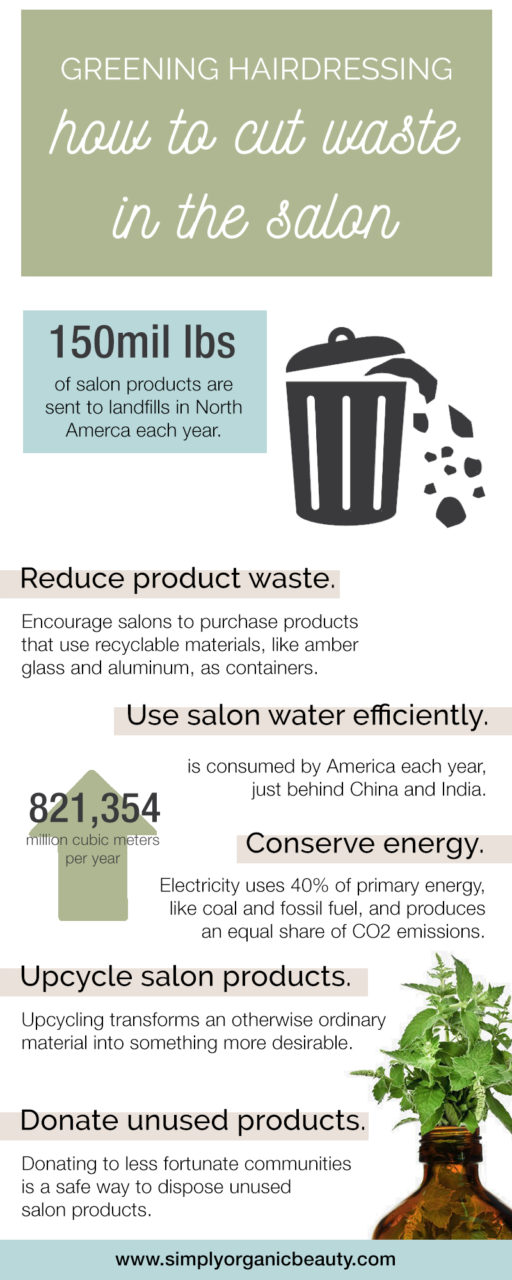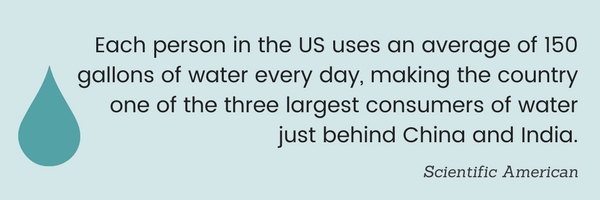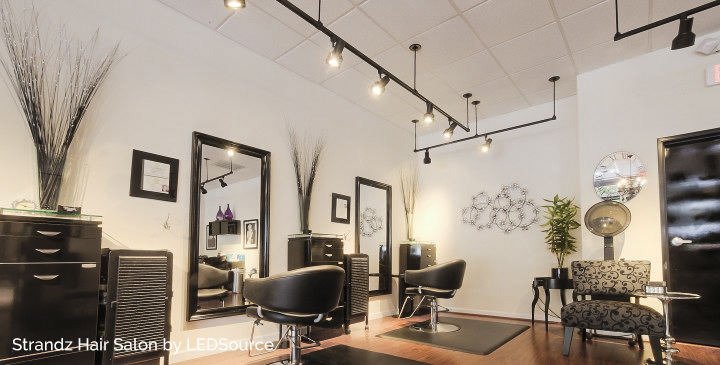Every day, the salon industry in North America churns out 421,206 pounds of waste. That’s about over 150 million pounds of trash thrown into landfills and our oceans each year!
As holistic hair stylists, we abide by our Do No Harm mantra, meaning we do no harm to the health of our clients, environment and ourselves. So, our day-to-day operations should also consider the direct impact we’re having on the planet. Are we contributing to the waste problem or are we finding a solution? As stewards of the environment, we should be doing the latter. And it starts in our own salons.
With proper salon waste management, we can actually help reduce the immense amount of trash we are generating. Below are some effective ways on how to cut salon waste.
5 Ways to Cut Salon Waste
Reduce product waste.
Foils, hair treatments, hair colors – these are only three items from a long list of salon-generated waste. From the plastic product containers to the rubber gloves and even the tiniest bit of leftover hair color, all these either find their way into our water supply or end up in landfills.
Fortunately, more and more environmentally conscious salon owners and private organizations are making a huge effort to inform hair stylists on proper waste management. One of them is reducing product waste by encouraging salons to purchase products that use recyclable materials like amber glass and aluminum as containers.
Unlike plastic, glass and aluminum can be recycled over and over without losing their strength, durability, and purity. Furthermore, recycling aluminum, including foils, only takes about 5% of the energy used to produce it, as opposed to plastic which hovers around 30%. Meanwhile, recycling glass releases 40% less carbon in the air and requires less raw materials than plastic. That’s a significant energy savings for the environment!
Once you’ve cleared your salon of plastic, the next logical step is to think about how you can avoid disposing of hazardous chemicals. Many salon products contain reactive and toxic ingredients and thus require proper handling. Always:
- Keep them at room temperature.
- Make sure they are properly sealed to prevent contamination.
- Use a weighing scale when measuring hair color to prevent waste. Through this method, there are no leftovers and therefore no toxic waste finding their way into our water systems.
- Encourage your clients to take part in your Refill Product Program. Glass products allow clients to reuse the containers and get the same product quality at a lesser cost to them and the environment.
Use salon water efficiently.
As water supplies begin to dwindle and drought in some parts of the country worsens, we need to re-evaluate our water usage and look for ways to cut back.
There are several water-saving practices that you can do to efficiently use water.

- Recycle water by installing a system that allows you to reuse water from your shampoo bowls and sinks for flushing toilets.
- Fix leaky faucets and showerheads. Did you know slow drips waste about 150-300 gallons per month?
- Replace old toilets with the new high-efficiency ones. This will help you save 22,000 gallons of water every year.
Conserve energy.
Hairdressing is considered one of the most energy-intensive business in the industry. Salons typically use 40,000kWhs of electricity annually. According to the International Energy Agency, producing electricity uses 40% of primary energy, like coal and fossil fuel, and produces an equal share of energy-related CO2 emissions.
As we all know, the excess of carbon dioxide in the atmosphere causes the greenhouse effect, which lead to global warming. Fortunately, there are several things we can do to reduce our salon’s carbon footprint.


- Consider using a tankless water heater. It heats water directly without using a storage tank. It only heats water when needed, thus allowing you to conserve not only water, but also energy.
- Opt for renewable sources of energy, like solar energy, to produce electricity and power your salon equipment. Renewable sources contribute to about 96-98% LESS greenhouse gases.
- Use low-energy lighting instead of the traditional incandescent bulbs. Incandescent bulbs emit 90% of the energy it uses as heat. Halogen incandescent, CFL, and LED lightbulbs are far more energy-efficient and cost-effective.
- Take it up a notch by making the most of natural light. It doesn’t require any energy, not to mention it’s free!
Upcycle salon products.
Upcycling takes recycling a step further. While recycling is great, upcycling transforms an otherwise ordinary material into something more desirable. For example, Oway’s amber glass jars and bottles can be used as beautiful plant holders or shelf décor. Check out this article for more ideas.
Donate. Donate. Donate.
All that hair has to go somewhere. You can donate them to organizations like Locks of Love and Wigs for Kids where they make wigs for people and children with cancer.
Hosting donation drives to support calamity survivors and less fortunate communities is also a great way to safely dispose salon products you no longer need, such as unused shampoo, conditioners, hair styling products, and tools.
Also, hair can be donated to Matter of Trust, where it’s used as an eco-clean up method during oil spills, furthering your salon’s eco-friendly efforts.





